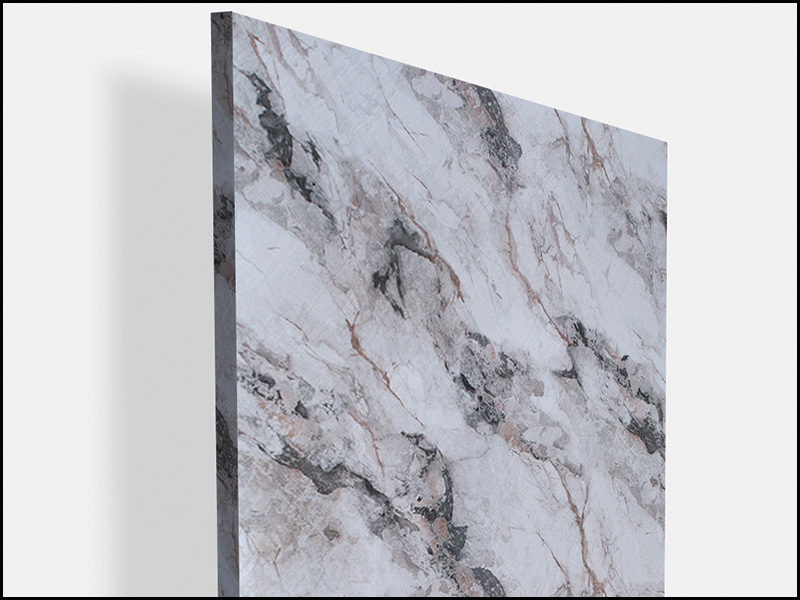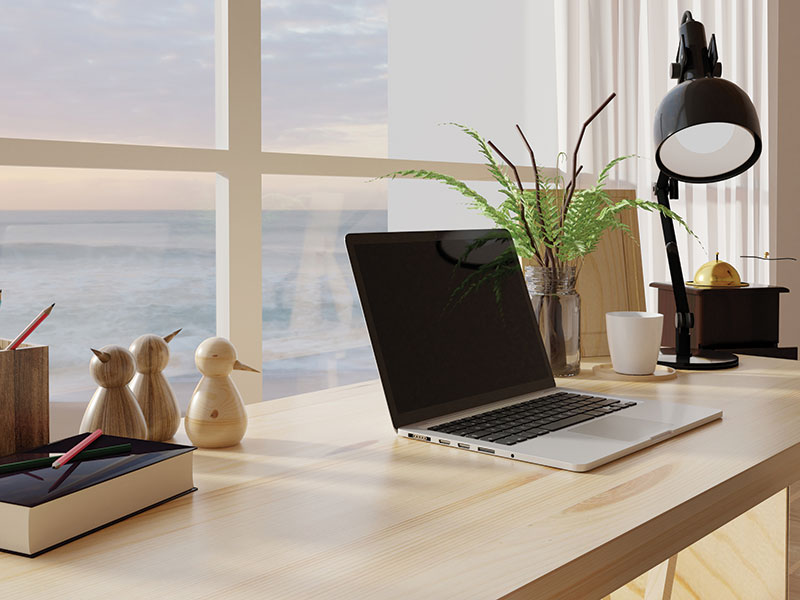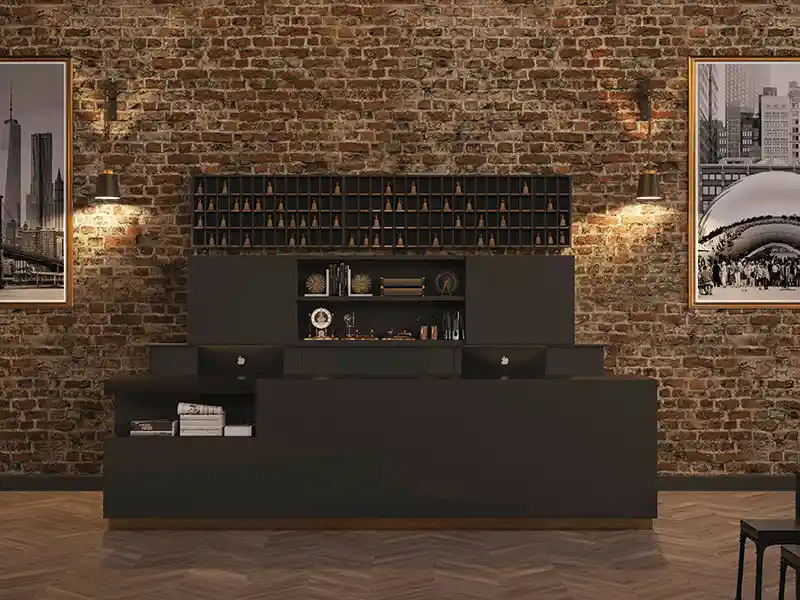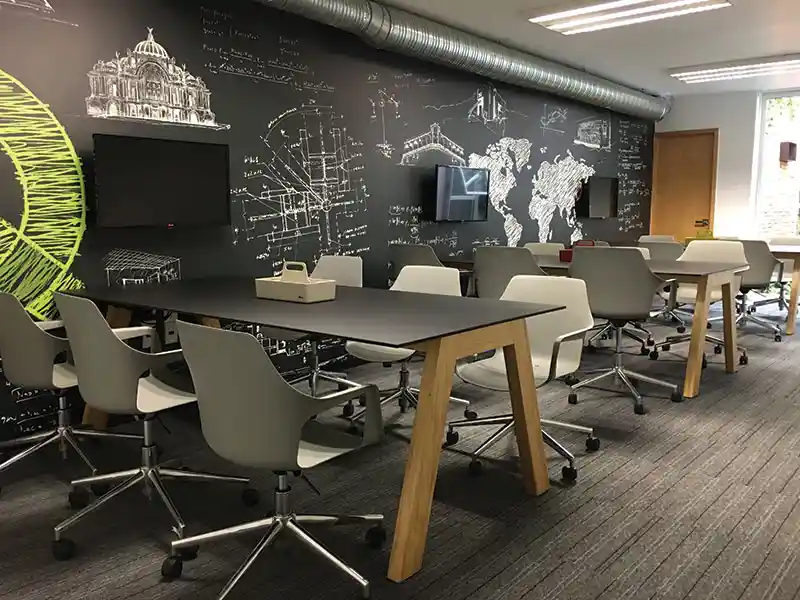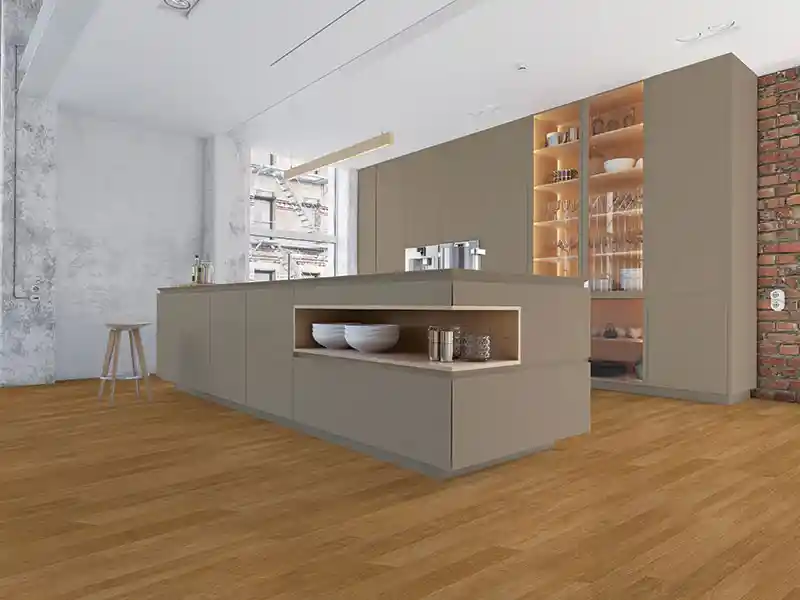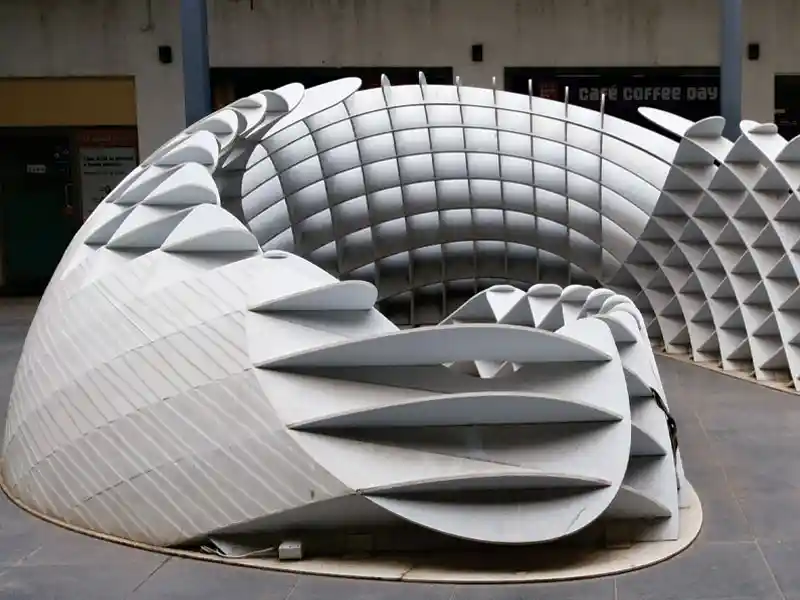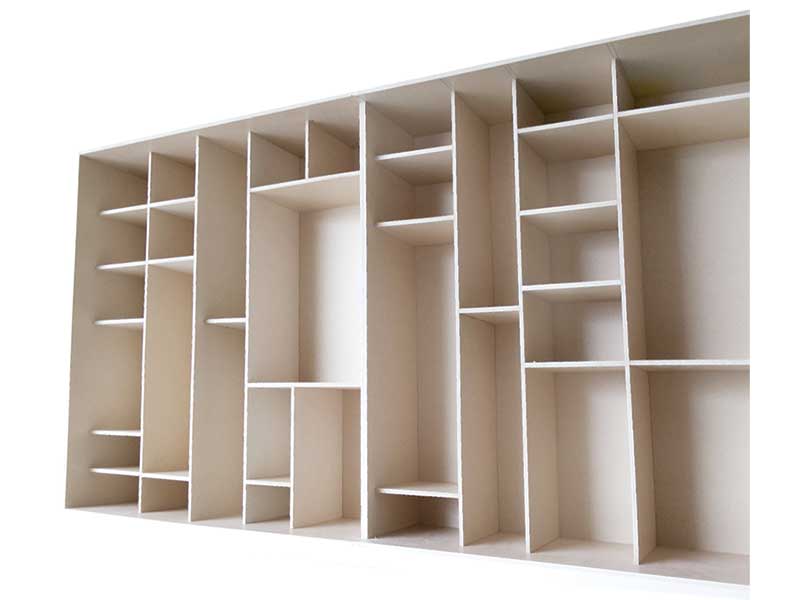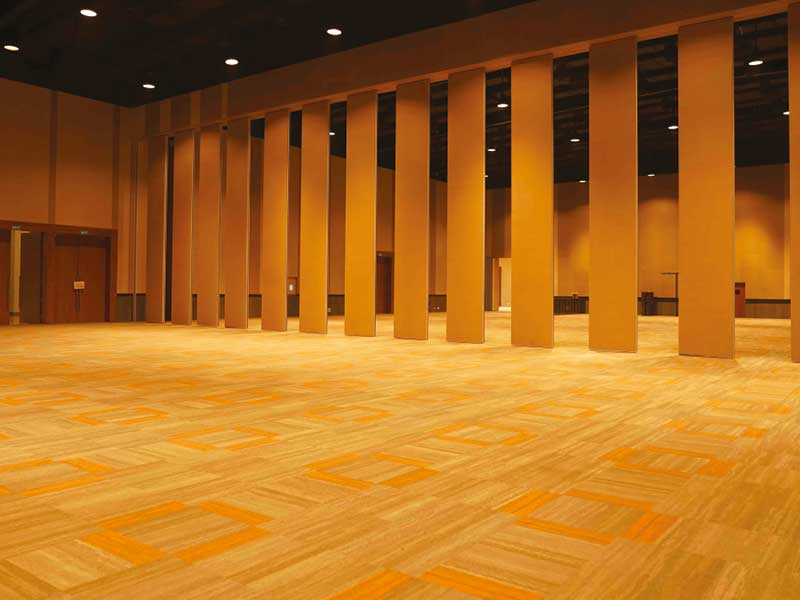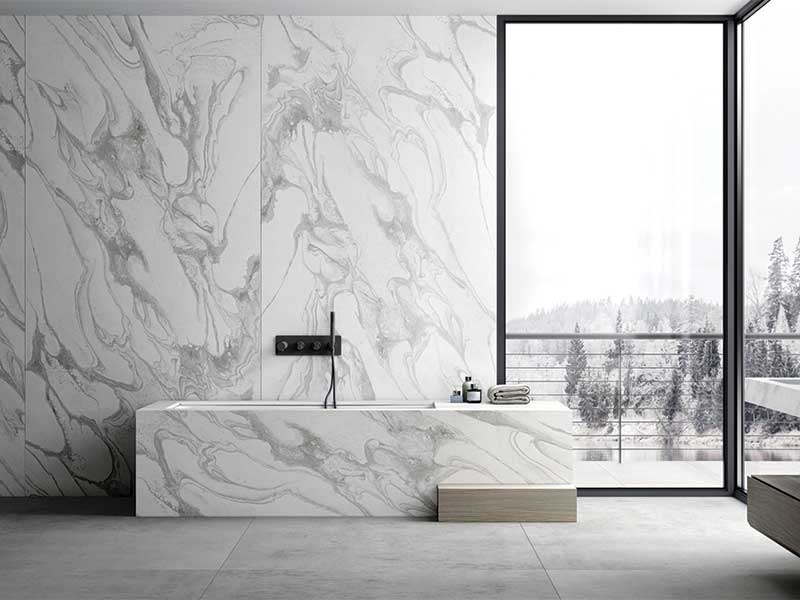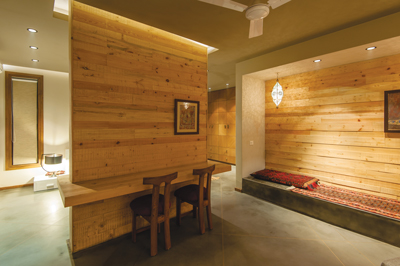
Innovations and technical enhancements such as silver nano technology during the manufacturing process of laminates have resulted in the creation of innumerable finishes, textures and visual effects ranging from metallic, leather, and fabric to high gloss, natural stone etc. These options have no doubt extended the usage and application versatility of the materials for architectural and interior décor purposes. Technical advancements have also resulted in the development of exterior grade compact laminates and anti-bacterial laminates.
Veneers, on the other hand, are natural as compared to laminates. They are preferred for their exclusivity since they cannot be replicated. However, veneers need more maintenance, and are more expensive.
Use of high quality plywood boards and panels add amazing decoration patterns to walls and furniture design, bringing the beauty and warmth of wood into modern interiors. Dining tables, office desks, storage boxes, and wall shelves made of beautiful plywood panels add beautiful accents to the living spaces. What’s more, plywood is flexible, inexpensive, easy to use, reusable, recyclable, and a strong versatile material.
According to a report by Daedal Research, the increased demand in the plywood and laminates market is being driven by the increasing urban population, rising per capita income, and a gradual shift towards non-food industry. Further, the implementation of GST in the near future is set to provide an impetus to the plywood and laminate industry.
As per the research, of the various engineered woods like plywood, laminates, MDF and veneers, plywood is the most in demand, followed by laminates, while MDF is yet a small segment. Though the unorganized market accounts for a major share, changing consumer preferences is seeing a shift towards branded products. This shift, again, is taking place primarily due to urbanization, greater awareness of quality and sustainability, and higher disposable income.

All the leading laminate manufacturers are investing substantial resources in exploring different finishes for laminate sheets. A single design can have any final finish from flat to high gloss to matt to textures to prints to metal foils and even combinations of any of them put together. While some finishes like teak and walnut remain a classic in both veneers and laminates, bold bright coloured laminates are making major inroads in sales. Customers are also getting inclined towards light wooden finishes and stained wood finish in laminates. It didn’t come as a surprise when at a seminar someone mentioned that the global laminate market would grow beyond 10 billion sq.mt by 2020.

Among veneers, alternate flitch arrangement is trending. Advantage of such a veneer is the visual impact. While maintaining the visual appeal of a veneer, it also adds variety and diversity in the grain pattern. Rustic and scarred finishes are also in demand for both veneers and laminates. Certain veneers are smoke charred and this gives them a smoked and rustic effect, which is gaining demand in high-end interiors. Laminates are about 0.8 – 1.0 mm thick, and often while using lighter shades, designers struggle to conceal the cut lines of base board which are dark in colour. As a solution to this problem, laminates are now available with a coloured core. When such a laminate is cut, it will not show any dark cut lines and the designer is free to explore lighter shades.
While working with laminates, it is important to understand the material properties. If a laminate is applied to one side of plywood, it may eventually bend the panel as moisture from the adhesive dries. To control this, laminates should be applied to both sides of the panel; if that is not prudent, a liner should be pasted on the other side. One has to ensure that a uniform layer of adhesive is used to bond laminate to plywood, and the bonding surfaces should be clean and edges taped. This would ensure that finished surface stays even.
Veneers need a little more care while handling. Unlike a sheet of laminate which can be replaced like to like; veneers are sold in batches. If a veneer batch is exhausted, same pattern can never be obtained, which calls for careful planning while handling veneers. Needless to say, the veneer quantity required for the project has to be carefully thought of in advance and then tallied with the batch stock of the dealer. Sometimes, customers are disappointed when the veneer they like is short in quantity and cannot be replaced like to like. Veneer selections are crucial so on a design / pattern approval, they must be procured immediately to ensure availability during execution. Laminates in this case enjoy the privilege of being always readily available.
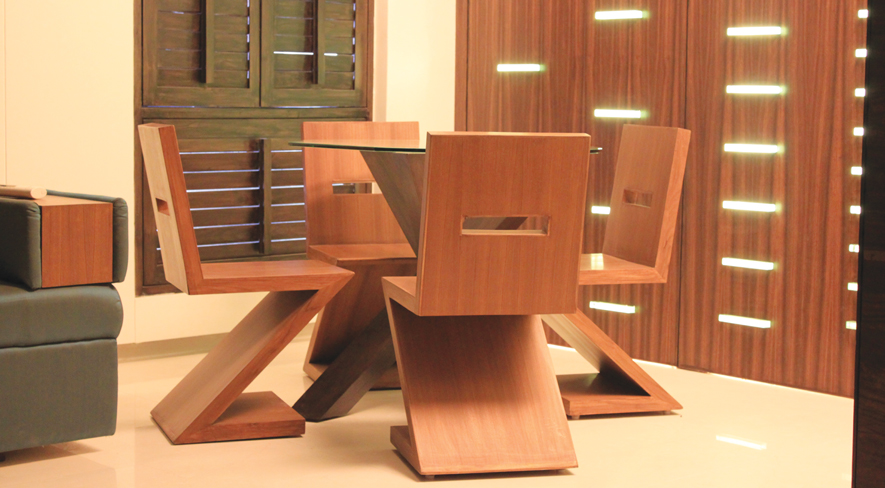
While working with veneers, one has to be careful while sanding it followed by sealer application as the flitch (the part shaved off the tree trunk) is very thin and can be easily damaged. Technicians must take due care while applying polish coats, and it has to be evenly applied, as too less would make it look unfinished, and too much will lead to runoff lines.
If taken care of, both laminates and veneers can last for decades. Laminates require less maintenance and just need to be wiped clean occasionally. Veneers need a bit more TLC. One needs to be careful not to use abrasive cleaners or wipes to clean veneer as it can easily damage the polished surface. Once the polish is breached, moisture ingress can take place leading to flaking and peeling. Leaving the worries apart, they are both fairly sturdy and can adorn interiors for much longer than most of the other finishes used in interiors.

MDFs and Marine plys have made all the difference to creating the desired look in interiors. We are seeing veneers in various shades, veins and textures, and polishes that lend a certain richness to the material when applied. Whereas, in IT companies, you will see a lot of colour. This is because the workforce is young and bubbly, and a backdrop of lively colours reflects the vibrancy of the office environment. The design scheme will of course depend on what the client is looking for, and what image he wants to project about his company. So, materials and colours have to be selected with great care, but with the ever-popular veneers, one will not go wrong!
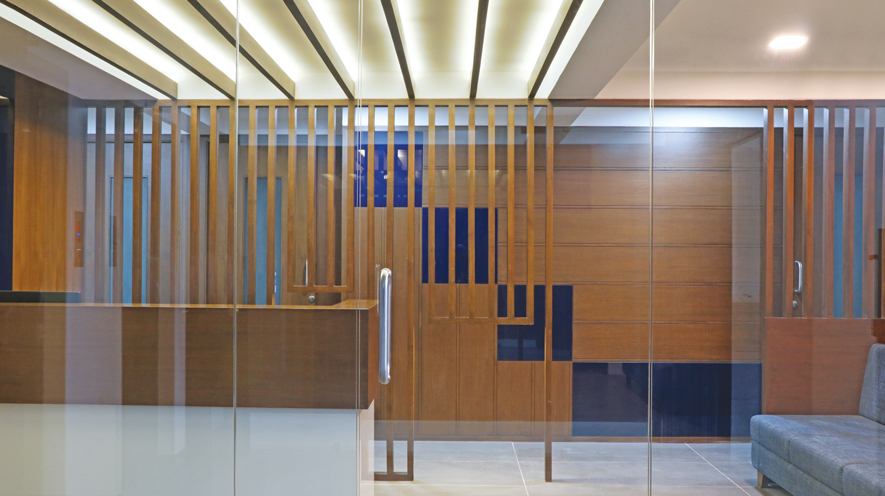

Plywood, Laminates, and Veneers are the backbone of finishing Architecture and Interior Design. We constantly put them to use across our projects. Clients in today’s era are aware of the technicalities attached to plywood. Most residential clients use either a semi-marine or a full marine ply. This is a waterproof grade of plywood. Commercial grade is mostly used in construction of commercial spaces. Plywood partitions are very common in a city like Mumbai where space is at a premium. Plywood enables us to create a wall within 2.5-3 inch and squeeze those extra inches inside a room.
Laminate is the most commonly used finishing material nowadays. High density laminate sheets are being used for various kinds of facade treatments. We have used them for various elevations, and for finishing the insides of furniture, kitchen shutters, bathroom doors, etc. Though we extensively use laminates in mass housing projects owning to the low cost of material as well as for the ease of application and finishing, as a designer I always prefer veneer for finishing because it is a natural material. The finishing is inevitably smoother and superior to laminate. Challenges we face with veneers are the difficulty in maintenance and high cost of material and finishing. With the advent of engineered laminates like a Burl, the finishing industry is reaching another level altogether.

Application of laminates and veneers are finding a burgeoning response from the market and the world of Interiors due to their several outstanding qualities. Laminates possess an inherent quality of flexibility, versatility, durability, and ability to gel in with any design without compromising on the quality of finish. Being cost-effective solutions for interior designs, laminates and veneers are being used with other materials to enhance the aesthetic appeal.
Conservation of forests is possible only by avoiding using solid wood. And the perfect simulation of solid wood are laminates and veneers, which are ideal solutions for paneling on walls and for engineered wood flooring. Manufacturers of laminates and veneers are frequently offering us extensive varieties and a fantastic range in terms of aesthetics which help the designers and architects like us to explore our creativity. The only point where we have to be more watchful is in the selection of the products, and one should go by branded laminates as they stand for quality, durability and accountability.

